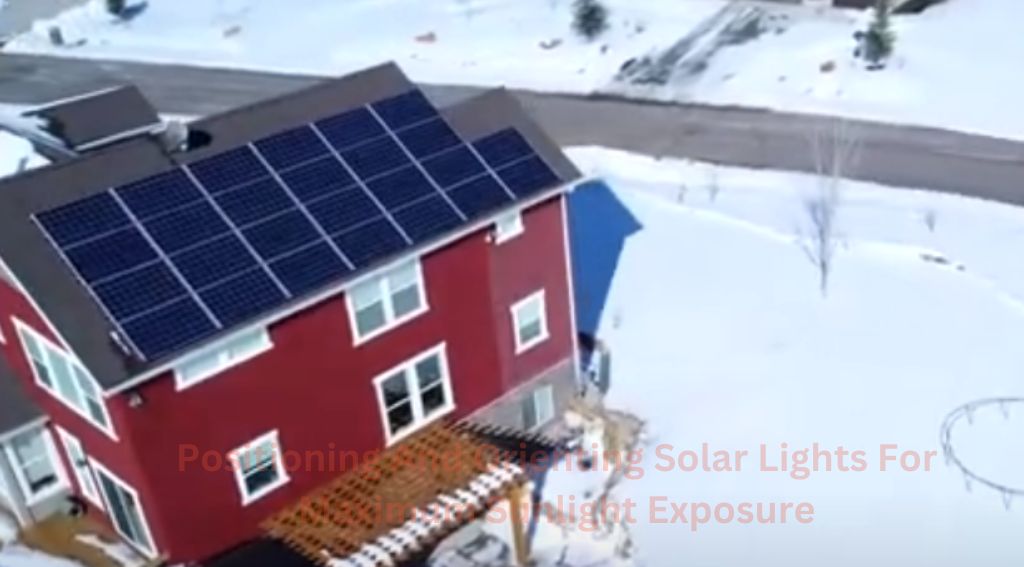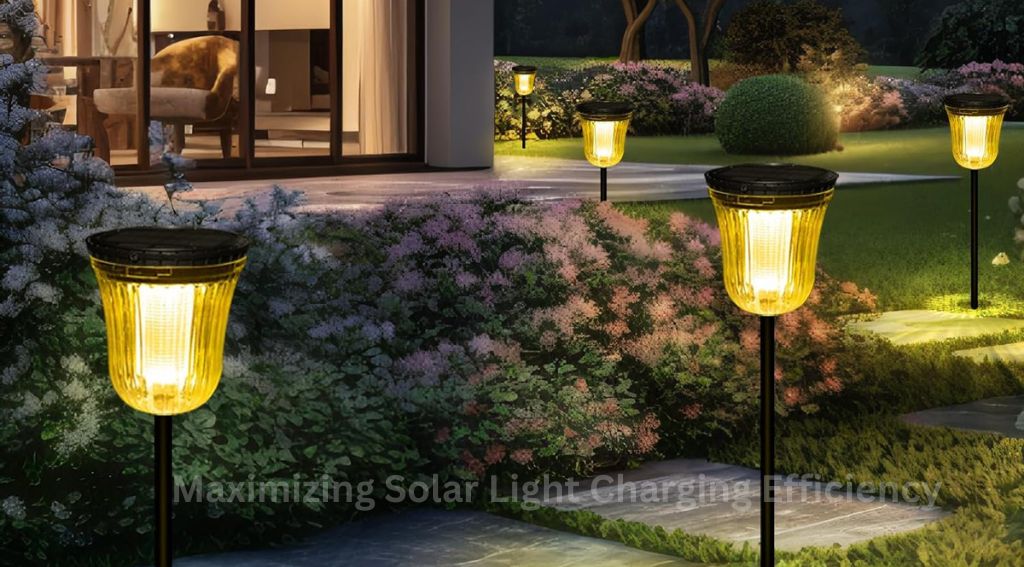How to Charge Solar Light: Top Strategies for Maximum Efficiency
To charge a solar light, place it in direct sunlight for several hours. The solar panels use sunlight to convert it into electricity, which powers the lights.
Solar lights are a convenient and eco-friendly alternative to traditional lighting options. They can be used to illuminate pathways, gardens, or outdoor spaces without the need for electrical wiring or batteries. However, to ensure their optimal performance, it is important to charge solar lights properly.
By following these simple steps, you can easily charge your solar light and enjoy the benefits of renewable energy.
Understanding Solar Light Charging Basics
Understanding the basics of solar light charging is crucial to ensuring optimal performance and longevity. Solar lights are becoming increasingly popular due to their eco-friendly nature and cost-effectiveness. With the ability to harness sunlight and convert it into renewable energy, solar lights offer a sustainable lighting solution for various applications.
How does solar light charging work?
Solar light charging involves a simple yet ingenious process that harnesses the power of the sun to recharge the built-in batteries. The key components of a solar light system include the solar panel, batteries, charge controller, and LED lights. Let’s take a closer look at the charging process:
- Solar panel captures sunlight: The solar panel, usually placed on top of the light fixture, absorbs sunlight throughout the day. Made up of photovoltaic (PV) cells, the solar panel converts sunlight into direct current (DC) electricity.
- Batteries store the energy. The rechargeable batteries inside the solar light receive the DC electricity that the solar panel generates. These batteries store the excess energy for later use during the night or in periods of low sunlight.
- The charge controller regulates the flow. To prevent overcharging or deep discharging of the batteries, a charge controller is included in the solar light system. This smart device monitors the battery voltage and regulates the flow of electricity from the solar panel to the batteries, ensuring efficient charging and protection against damage.
- LED lights illuminate: The stored energy in the batteries powers the LED lights within the solar light fixture. LED lights are highly energy-efficient, providing bright and long-lasting illumination compared to traditional light bulbs.
The Importance Of Efficient Charging For Optimal Performance
Efficient charging is vital to ensuring the optimal performance and longevity of solar lights. Here’s why:
- Maximizes energy utilization: Proper charging allows solar lights to make the most of the sun’s energy, ensuring that the batteries are fully charged and ready to provide illumination when needed.
- Prolonged battery life: Overcharging or deep discharging of batteries can significantly reduce their lifespan. Efficient charging techniques, such as using a charge controller, help prevent damage and extend the battery’s overall life.
- Enhances lighting performance: Well-charged batteries result in brighter and longer-lasting light output. This is especially important during cloudy days or when using solar lights in areas with limited sunlight.
- Promotes sustainability: By efficiently utilizing solar energy, solar lights reduce the dependence on conventional power sources, contributing to a greener and more sustainable environment.
Understanding the charging basics of solar lights empowers users to ensure that their solar light systems are running optimally. By harnessing the power of the sun and efficiently charging the batteries, solar lights offer a reliable, eco-friendly, and cost-effective lighting solution for various outdoor and indoor applications.
Choosing The Right Solar Light Charger
When it comes to charging your solar lights, selecting the right solar light charger plays a crucial role in ensuring efficient and hassle-free charging. With various options available on the market, it’s important to consider certain factors, compare different types, and understand the charging capabilities of various models. Let’s dive deeper into each of these aspects to help you make an informed decision.
Factors To Consider When Selecting A Solar Light Charger
Before you invest in a solar light charger, keep these factors in mind:
- Compatibility: Check if the charger is compatible with your solar lights. Different solar lights may have different charging requirements, so ensure that the charger is designed for your specific model.
- Charging Capacity: Consider the capacity of the charger in terms of power output. Look for a charger that can provide sufficient power to charge your solar lights effectively.
- Portability: If you plan to travel with your solar lights, look for a charger that is lightweight and easily portable. This way, you can charge your lights on the go.
- Durability: Solar light chargers are designed to be used outdoors, so they should be built to withstand various weather conditions. Look for a charger made from durable materials that can handle outdoor use.
- Additional Features: Some chargers come with additional features like built-in USB ports, LED indicators, or multiple charging modes. Consider your specific needs and look for a charger with features that enhance convenience and functionality.
Comparing Different Types Of Solar Light Chargers
There are several types of solar light chargers available on the market. Let’s compare some of the most common types:
| Type of Charger | Pros | Cons |
| Standard Solar Charger | Simple and easy to useGenerally affordableCompatible with most solar lights | Simple and easy to use generally affordableCompatible with most solar lights |
| Foldable Solar Charger | Highly portable and lightweight, it provides faster charging and can be used to charge multiple devices | May have slower charging times and not be suitable for larger solar light systems |
| Solar Power Bank | Offers to charge on the go and store excess solar power for later use. usually has multiple USB ports | Usually, more expensive products may require a larger surface area for optimal charging |
Understanding The Charging Capabilities Of Various Models
When selecting a solar light charger, it’s important to understand the charging capabilities of different models. This includes the power output, charging time, and compatibility with various solar light systems. Look for detailed specifications provided by the manufacturer to ensure that the charger meets your specific needs. Additionally, consider user reviews and ratings to gauge the overall performance and reliability of the charger.
Positioning And Orienting Solar Lights For Maximum Sunlight Exposure

The Impact Of Sunlight Exposure On Charging Efficiency
When it comes to charging solar lights, maximizing exposure to sunlight is crucial for efficient charging. Sunlight is the main source of energy for solar lights, and the more sunlight they receive, the faster and more effectively they charge.
How to Clean Solar Pathway Lights
Sunlight exposure directly impacts the charging efficiency of solar lights. Solar panels installed in these lights harness the energy from sunlight and convert it into electrical energy. This energy is stored in the batteries within the lights, allowing them to illuminate during the night. Therefore, it is essential to position and orient solar lights in a way that ensures maximum sunlight exposure throughout the day.
Best Practices For Positioning And Orienting Solar Lights
Proper positioning and orientation of solar lights play a vital role in optimizing sunlight exposure. Follow these best practices to make the most of your solar lights:
1. Place solar lights in direct sunlight.
Ensure that your solar lights are placed in areas with direct sunlight. Avoid placing them in shaded areas or under trees, as this will obstruct sunlight and hinder the charging process. Direct sunlight provides the highest amount of energy and ensures optimal charging efficiency.
2. Angle solar panels towards the sun:
Position the solar panels of the lights in such a way that they face the sun at its highest point during the day. This will allow them to absorb the maximum amount of sunlight. For fixed solar lights, adjust the angle of the panels in such a way that they are perpendicular to the sun’s rays. This positioning will ensure efficient charging throughout the day.
3. Keep solar panels clean.
Regularly clean the solar panels of your lights to prevent dust, debris, or dirt from obstructing sunlight absorption. This maintenance practice helps to maintain the optimum charging efficiency of your solar lights.
Dealing With Obstacles That May Block Sunlight
While we aim for maximum sunlight exposure, obstacles such as buildings, trees, or tall structures can sometimes obstruct the path of sunlight to the solar panels. Here’s how you can overcome these obstacles:
1. Relocate solar lights:
If possible, move your solar lights to a location with fewer obstructions. By finding an open area with a clear view of the sky, you can ensure unobstructed sunlight exposure for better charging performance.
2. Trim surrounding vegetation:
Regularly trim any overgrown trees or bushes near your solar lights to prevent them from casting shadows on the panels. Removing these obstructions will allow maximum sunlight to reach your solar lights, promoting efficient charging.
3. Adjust the mounting position:
If you can’t relocate your solar lights or trim surrounding vegetation, consider adjusting the mounting position of the lights. Tilting or raising the lights may help in finding the optimal position where they receive the most sunlight, even in the presence of obstacles.
How to Install Outdoor Solar Lights
By following these best practices for positioning and orienting your solar lights, you can maximize sunlight exposure and ensure efficient charging. Remember, proper placement and orientation are key to harnessing the full potential of solar energy and enjoying the long-lasting illumination of your solar lights.
Maximizing Solar Light Charging Efficiency

Properly charging your solar light is essential for maximizing its performance and ensuring it functions optimally. By implementing a few tips, utilizing additional charging methods, and understanding battery capacity, you can significantly enhance the charging efficiency of your solar light.
Tips For Optimizing Solar Light Charging Speed
If you want to speed up the charging process of your solar light, here are some tips to help you achieve faster results:
- Place your solar light in direct sunlight. Position your solar light in an area that receives maximum sunlight exposure throughout the day. This ensures that the solar panel captures as much energy as possible.
- Clean the solar panels regularly. Dust, dirt, and debris can accumulate on the solar panel, reducing its ability to absorb sunlight. Regularly clean the panel with a soft cloth or brush to maintain its efficiency.
- Angle the solar panel correctly: Depending on your location, adjusting the angle of the solar panel can enhance its exposure to the sun’s rays. Experiment with different angles to find the optimal position for maximum sunlight absorption.
- Avoid shading the solar panel. Shade can significantly impact the charging performance of your solar light. Ensure that the panel is free from any obstructions, such as trees or buildings, that may cast shadows during peak sunlight hours.
- Minimize battery drain: Turn off unnecessary features or reduce the brightness settings of your solar light during the charging process to prevent energy waste and optimize charging speed.
Utilizing Additional Charging Methods For Faster Results
In addition to sunlight, there are alternative charging methods you can utilize to expedite the charging of your solar light:
- USB charging: Some solar lights come equipped with a USB port, allowing you to connect them to a power source for rapid charging. This option is useful when you have limited sunlight or need to charge your solar light quickly.
- External solar panels: If your solar light doesn’t provide satisfactory charging speed, you can consider utilizing external solar panels. These panels, placed in a sunnier location, can harness more solar energy and transfer it to your solar light for faster charging.
Understanding And Managing Battery Capacity
The capacity of your solar light’s battery plays a crucial role in its overall charging efficiency. Here are some key considerations for understanding and managing battery capacity:
- Check battery specifications: Understand the specifications of your solar light’s battery, such as its voltage and capacity. This information can help you assess the charging requirements and estimate the charging time.
- Proper battery maintenance: Regularly inspect and clean the battery contacts to prevent corrosion. Additionally, avoid overcharging or discharging the battery excessively, as these practices can degrade its capacity over time.
- Upgrade the battery if needed. If you find that your solar light’s battery is no longer performing optimally or has a low capacity, consider replacing it with a higher-quality or higher-capacity battery for improved charging efficiency.
By following these tips, utilizing alternative charging methods, and effectively managing battery capacity, you can maximize the charging efficiency of your solar light and enjoy brighter and longer-lasting illumination.
Maintaining And Troubleshooting Solar Light Charging
Solar lights are a great investment for both environmental sustainability and energy savings. However, like any other electronic device, they require regular maintenance to ensure optimal performance. This section will discuss the importance of maintaining and troubleshooting solar light charging, including regular maintenance practices, common issues, troubleshooting techniques, and how to extend the lifespan of solar light batteries.
Regular Maintenance Practices For Solar Light Charging
Maintaining solar light charging regularly is crucial to keeping them working efficiently. By following these maintenance practices, you can ensure long-lasting performance:
- Clean the solar panels: Dust, dirt, and debris can reduce the efficiency of solar panels. Regularly clean the panels with a non-abrasive cloth and mild detergent to remove any accumulated grime.
- Check the positioning: Solar lights rely on direct sunlight to charge properly. Make sure there are no trees, structures, or other items blocking the lights that could shade the panels. Adjust their positioning if necessary.
- Inspect the batteries: Check the battery connections to ensure they are secure. Clean any corrosion on the contacts with a mixture of vinegar and water. Replace old or damaged batteries to maintain optimal charging capability.
Common Issues And Troubleshooting Techniques
Despite regular maintenance, solar lights might encounter some common issues. Here are a few troubleshooting techniques for resolving these problems:
- Dim lighting: If your solar lights are not shining as brightly as they used to, it may indicate a problem with the battery. Verify that the batteries are properly connected and fully charged. Replace the batteries if needed.
- Intermittent lighting: If your solar lights turn on and off intermittently, check if there is any shade covering the panels. Remove any obstacles that obstruct the sunlight. Also, ensure that the solar panels are clean and facing the sun directly.
- No lighting at night: If your solar lights don’t turn on at night, first check the switch or the automatic sensor to make sure it is in the correct position. If the switch and sensor are working correctly, then it may indicate a problem with the battery or solar panel efficiency. Inspect and troubleshoot accordingly.
Extending The Lifespan Of Solar Light Batteries
By taking care of the batteries in solar lights, you can extend their lifespan and avoid frequent replacements. Follow these tips to ensure your solar light batteries last longer:
- Allow for a full charge: When first using your solar lights or after replacing the batteries, allow them to fully charge in direct sunlight for at least two days. This helps condition the batteries and ensures optimal performance.
- Store solar lights in winter: If you live in an area with harsh winters, consider storing your solar lights indoors during the colder months. Extreme temperatures can reduce battery performance.
- Regularly replace batteries: Even with proper maintenance, solar light batteries will eventually wear out. Regularly check and replace the batteries every 1-2 years, depending on usage and manufacturer recommendations.
By following these maintenance practices and troubleshooting techniques, you can enjoy the benefits of solar lighting for years to come. Remember, a little upkeep goes a long way in ensuring the optimal functioning of your solar lights!
Frequently Asked Questions On How To Charge Solar Light
How Do You Charge Up Solar Lights?
To charge solar lights, place them in direct sunlight for several hours. The sun’s rays will power the built-in solar panels, converting sunlight into energy. This stored energy is then used to illuminate the lights during the night.
Can you charge solar lights without the sun?
Solar lights cannot be charged without the sun, as they rely on solar energy to generate power. The sun’s rays activate the solar panels, converting sunlight into electricity, which is then stored in the batteries of the solar lights.
How much sun does it take to charge solar lights?
Solar lights require an average of 6–8 hours of direct sunlight to fully charge.
How Long Does It Take For A Solar Light To Charge?
A solar light typically takes several hours to fully charge, depending on the quality of sunlight it receives. On average, it can take around 6–8 hours to charge completely.
Conclusion
To summarize, charging solar lights is a simple and efficient way to harness renewable energy. By following these steps, you can ensure optimal performance and longer battery life for your solar light. Remember to place the light in direct sunlight, clean the solar panel regularly, and charge it fully before use.
With a little effort, you can enjoy the benefits of eco-friendly lighting and contribute to a greener future.




